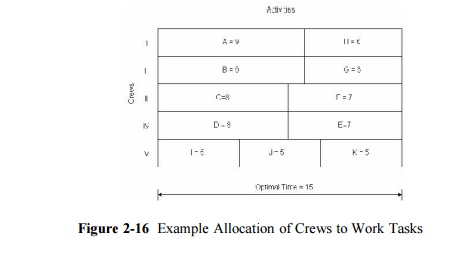Chapter: Civil : Construction Planning And Scheduling
A Reservation System and Heuristic Resource Allocation

Resource
Oriented Scheduling:
A
Reservation System
A recent construction project for a high-rise
building complex in New York City was severely limited in the space available
for staging materials for hauling up the building. On the four building site,
thirty-eight separate cranes and elevators were available, but the number of
movements of men, materials and equipment was expected to keep the equipment
very busy. With numerous sub-contractors desiring the use of this equipment,
the potential for delays and waiting in the limited staging area was
considerable. By implementing a crane reservation system, these problems were
nearly entirely avoided. The reservation system required contractors to
telephone one or more days in advance to reserve time on a particular crane.
Time were available on a first-come, first-served basis (i.e. first call, first
choice of available slots). Penalties were imposed for making an unused
reservation. The reservation system was also computerized to permit rapid
modification and updating of information as well as the provision of standard
reservation schedules to be distributed to all participants.
Heuristic
Resource Allocation
Suppose that a project manager has eleven pipe sections for which necessary support structures and materials are available in a particular week. To work on these eleven pipe sections, five crews are available. The allocation problem is to assign the crews to the eleven pipe sections. This allocation would consist of a list of pipe sections allocated to each crew for work plus a recommendation on the appropriate sequence to undertake the work. The project manager might make assignments to minimize completion time, to insure continuous work on the pipeline (so that one section on a pipeline run is not left incomplete), to reduce travel time between pipe sections, to avoid congestion among the different crews, and to balance the workload among the crews. Numerous trial solutions could be rapidly generated, especially with the aid of an electronic spreadsheet. For example, if the nine sections had estimated work durations for each of the fire crews, then the allocations shown in Figure 2-16 would result in a minimum completion time.

Related Topics